Whether you’re trying to fix a wiring harness for automotive purposes or any other task, it’s essential to know how to evaluate it for possible damage. A multimeter can be a useful tool in this process, as it can help you identify any breaks or frayed wires. In this blog post, we’ll show you how to check a wiring harness with a multimeter, so you can make sure your project is up to par. Read on to learn more!
What Is a Multimeter?
Multimeters are used to measure the strength of a circuit’s power source, to check for loose connections or frayed wires in electrical wiring harnesses, and to troubleshoot faulty circuits. Multimeters come in various models with different ranges of measurement capabilities. Generally speaking, the more powerful and expensive the model is, the greater its range of measurements will be.
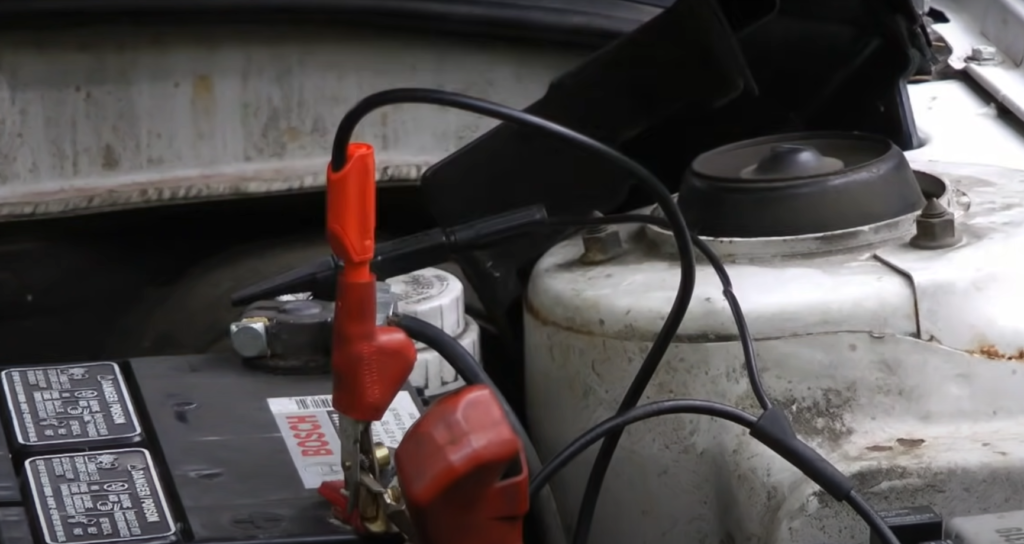
To use a multimeter correctly with a wiring harness, you’ll need to have an understanding of how to set it up and read its results effectively. While some multimeters feature automated testing features that can help guide you through these steps, it’s important to have a basic understanding of multimeter operation before attempting to use it with a wiring harness. [1]
How To Check Wiring Harness With Multimeter
Step 1: Identify Wires To Test
Before you get your multimeter out to test the wiring harness, it’s critical that you have a clear understanding of what wires must be examined. If you are unsure of what each wire does, consult your vehicle’s service manual or talk with a mechanic for further advice.
Step 2: Choose A Multimeter Test Setting
Depending on the type of multimeter that you own, there may be several different test settings available for use. For wiring harness tests, select either resistance or continuity mode in order to determine whether or not a particular connection has been made correctly.
Step 3: Connect the Multimeter Leads To The Wires
Once the appropriate setting has been chosen, connect the multimeter leads to both ends of the wire using alligator clips. Be sure to check that the clips are firmly attached and not loose, otherwise you may receive inaccurate readings.
Step 4: Read And Record The Results
Once connected, note down the reading displayed on the multimeter’s display screen. If there is a consistent connection between the two wires then you should receive a low resistance or continuity signal and if there is an issue with the wiring harness then you will likely get a high resistance signal.
Step 5: Repeat As Necessary
To ensure accurate results, repeat steps 3 and 4 for each wire in the wiring harness. This will allow you to identify any potential issues before they become serious problems.
Step 6: Reconnect All Wires And Test Again
Once all of the wires have been tested, reconnect them and then test again. This will help to confirm that all of the connections have been made correctly and will ensure that your wiring harness is in good working condition.
By following these steps, you can easily check the wiring harness on your vehicle with a multimeter in order to detect any potential issues before they become serious problems. Doing so can save you time and money in the long run by avoiding costly repairs due to faulty wiring. Furthermore, it will also help to keep your vehicle running at peak performance levels. [2]
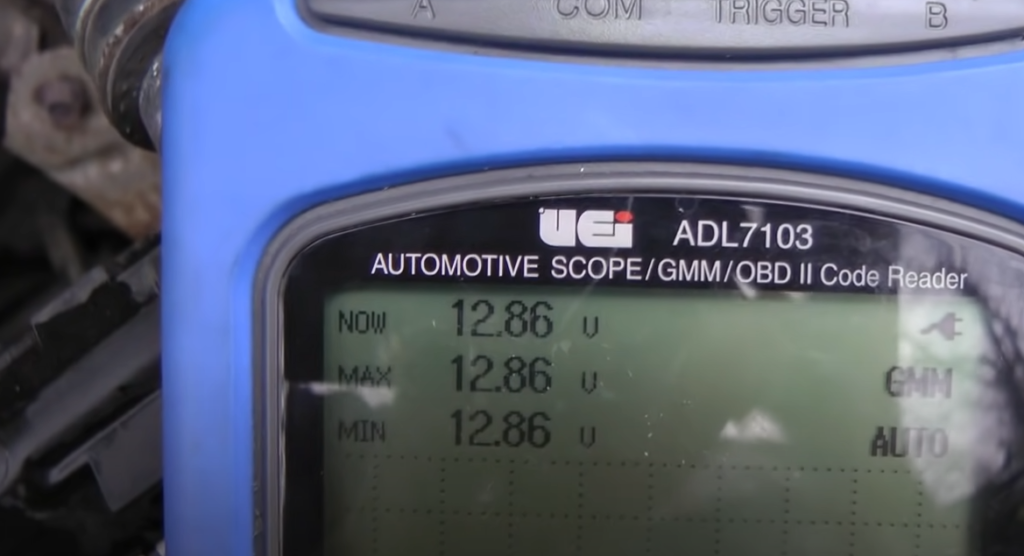
Signs Of Bad Wiring Harness
When checking a wiring harness with a multimeter, there are some signs that indicate the wiring harness might be bad. These include:
- Burned or blackened wires – This is usually caused by too much electrical current passing through the wires, which can cause them to overheat and potentially short-circuit.
- Corroded connections – Connections between different elements of the wiring harness may become corroded due to contact with moisture or other corrosive substances. This corrosion can lead to poor connection quality and degraded performance.
- Cracked insulation – The insulation on wiring harnesses can crack over time due to age or exposure to extreme temperatures, which can lead to shorts in the circuit and degraded performance.
- Exposed wires – Wires that are exposed or have worn away insulation can lead to shorts in the circuit, as well as other electrical problems.
- Loose connections – Wiring harnesses may become loose over time due to vibration and wear, which can cause poor connection quality and degraded performance.
If any of these signs of a bad wiring harness are present, it is important to replace the wiring harness before continuing with multimeter testing. This will ensure accurate readings and avoid causing further damage to the vehicle’s electrical system. [3]
Pros And Cons Of Multimeter Tests
Testing your wiring harness with a multimeter offers several advantages and some disadvantages. One of the main advantages is that it is often a very cost-effective way to check whether or not you have the correct electrical connections. This can be especially useful when dealing with complex wiring systems or those with many components, as it allows you to determine if any part has been damaged or disconnected.
Another advantage of testing with a multimeter is that it provides fast results and requires little expertise to use one properly. All you need to do is follow the instructions provided by the manufacturer and connect the probes correctly in order to receive accurate readings from each component of the circuit being tested.
The only real downside to using a multimeter for testing is that it requires physical contact with the components in order to get readings. This can be difficult if you have limited access or are dealing with smaller components, such as wires and connectors. Also, since this type of test does not provide a visual inspection of the wiring itself, any faults may remain hidden until further investigation is conducted.
Overall, testing your wiring harness with a multimeter can provide quick and accurate results, but it is important to remember that it should not be used as a substitute for a thorough visual inspection of all components in the circuit.
Types of Multimeters
Before getting started with checking wiring harnesses, it is important to understand the types of multimeters available. Multimeters come in a variety of designs, from simple manual devices to complex digital versions which are often computer controlled. The type of multimeter you need for your job depends on the complexity and accuracy of the measurements required.
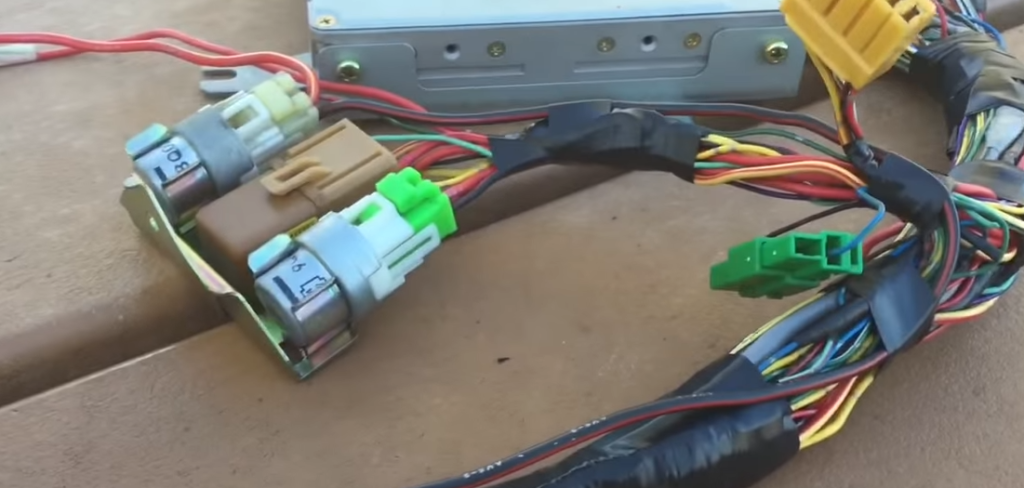
Manual multimeters are often ideal for basic electrical work such as diagnosing short circuits, measuring voltage and current, testing continuity and resistance. Digital multimeters have a wider range of features that make them more suitable for advanced electrical tasks such as analyzing data signals, comparing waveforms or working with sensitive components like transistors.
Computer-controlled multimeters offer even more accuracy and precision but can be considerably more expensive. It is important to choose the right type of multimeter for your job in order to get accurate and reliable results. [4]
How to Use a Multimeter to Measure Amps
Using a multimeter to measure amps is a process that should be approached with caution. It is important to understand the amount of current that you are measuring can cause serious harm if handled incorrectly.
Before attempting to measure amperage, identify the live wires in your wiring harness and ensure they are disconnected from any other circuits or devices before proceeding. To measure the current, you will need two probes: one red probe and one black probe.
Attach the red probe to the positive terminal of your wiring harness and attach the black probe to either ground or neutral (this depends on whether or not AC or DC power is being measured). Now set your multimeter to “amps” and use its selector switch until you find the correct range.

Once the multimeter is set up, turn on the power and watch as the needle swings to indicate how much current is flowing through your wiring harness. Note that amps are measured in thousandths, meaning that if you see a reading of 0.1A then it means there is 100mA of current flowing through the wires.
It is important to be aware that when measuring amperage with a multimeter, you should never exceed any recommended maximum amperage limits stated by the manufacturer of your device or wiring harness. Doing so could result in electrical shock or even fire hazards due to overheating.
After performing this measurement, turn off all power sources and disconnect all probes before continuing with other testing or wiring harness operations. To ensure all readings are accurate, it is recommended to repeat the process several times and average the results together for a more reliable measurement.
By following these steps, you should be able to use a multimeter to measure amps in any wiring harness safely and accurately. Doing so can help prevent damage or malfunctions due to incorrect amperage levels and provide peace of mind when working with electrical systems.
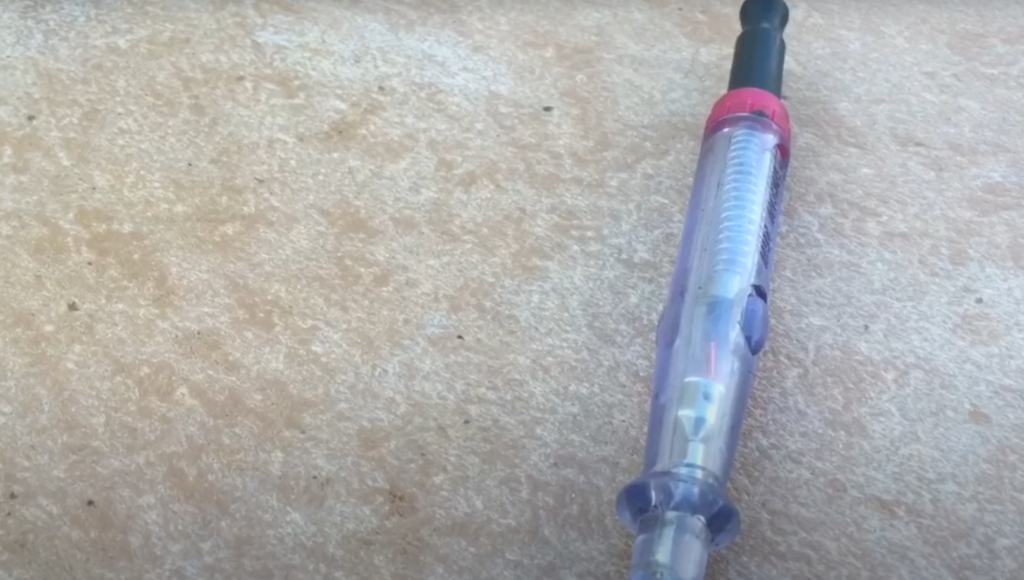
Multimeter Reading Keeps Jumping: What to Do?
When you are testing a wiring harness with a multimeter, it’s possible that its readings may keep jumping or fluctuating. This is an indication of a faulty connection or an interruption in the power supply. To fix this issue, start by checking the connections at both ends of the harness to make sure they are securely connected and no wires are loose or disconnected.
You should also check for any breaks in the insulation that could be causing an electrical short circuit. If all connections appear secure but still there is no change in the reading, then there could be some sort of interference from another nearby device that is disrupting the electrical current running through your system. Try separating them by moving them further away and see if this helps to stabilize the readings on your multimeter.
If you are still having difficulty stabilizing the readings on your multimeter, it might be worth consulting a professional electrician to help diagnose and repair any issues in your wiring harness. They should be able to identify and fix the problem quickly and efficiently, so that you can get back to using your device without worry.
Finally, make sure to keep up with regular maintenance of your wiring system to ensure proper functionality at all times. This includes checking for loose connections or breaks in the insulation regularly and replacing any old or damaged wires as needed. [5]
FAQ
How do you test a wiring harness with a multimeter?
Testing a wiring harness with a multimeter requires setting the multimeter to measure resistance. Once set, the multimeter should be placed on either end of the wire to measure its resistance. Other tests such as measuring voltage or continuity can also be done using the multimeter. It is important to ensure that all connections are secure before testing so that accurate readings can be taken. Additionally, it is important to follow all safety guidelines when working with electricity and wiring harnesses.
What are the 4 warning signs of electrical wiring?
The four warning signs of electrical wiring include sparks and/or smoke, an unusually hot outlet or connector, a burning smell, and flickering lights. If any of these warning signs are present, it indicates that there is something wrong with the wiring and should be addressed immediately by a professional electrician.
What can go wrong during wiring harness installation?
If not done properly, a number of issues can arise during wiring harness installation. These include incorrect connections being made between wires, loose connections causing power loss, grounding issues resulting in shocks or shorts, and corrosion on the connectors leading to poor connectivity. Additionally, improper mounting techniques can cause rattling noises while driving or even create fire hazards due to exposed wire strands. Because of this risk it is best to leave the installation of a wiring harness to experienced professionals.
What precautions should be taken when working with wiring harnesses?
When working with wiring harnesses, it is important to take safety precautions such as wearing protective gloves and eyewear, ensuring that all connections are secure before testing, turning off power sources while making electrical repairs or adjustments, and following any additional instructions provided by the manufacturer. Additionally, it is important to always have a certified electrician inspect any wiring installations for potential hazards.
How do you test an ECU with a multimeter?
To test an ECU (Engine Control Unit) with a multimeter, you need to establish connections between the ECU and the tester. It is important to note that this procedure must be done with extreme care and caution as incorrect connections may cause permanent damage to both the multimeter and the ECU.
Once the connections are established, you can use your multimeter to measure voltage across each of the pins in order to ensure that they are all within specification. You should also check for continuity by measuring resistance between any two points in order to ensure that there are no open circuits present.
Additionally, you can also use your multimeter to measure current draw on individual circuits or components.
If not, further investigation may be needed in order to locate the problem. Properly testing an ECU with a multimeter requires both skill and patience. Working with sensitive components such as these carries certain risks and should never be attempted without the proper knowledge and experience. It is highly recommended that you seek professional help if you are unsure about any part of this process.
What is normal ECU voltage?
The standard voltage of an electronic control unit (ECU) is 5 volts. However, some advanced ECUs may require a higher voltage depending on the type and complexity of the functions they are responsible for. It’s important to check the specific requirements of your ECU before connecting it to any power source, as going beyond its recommended voltage can damage the circuitry and render it unusable. A multimeter can be used to test the appropriate input voltages before powering up the ECU. This will help ensure that no irreversible mistakes are made during installation or troubleshooting.
Useful Video: Harness Testing – Wiring Harness Series
Conclusion
Using a multimeter to check wiring harnesses is a quick and effective way to ensure that your electrical components are receiving the correct voltage. This technique can help you identify any faulty wiring, breaks in the wire, or shorts in the system. Always remember to turn off power before making any tests with a multimeter. Additionally, consult an experienced electrician if there is ever any doubt about the results of your multimeter test. With this knowledge, you will be able to quickly and safely diagnose problems with wiring harnesses using a multimeter.
References
- https://mrfixitca.com/how-to-check-wiring-harness-with-multimeter/
- https://shop.advanceautoparts.com/r/car-projects/how-to-diagnose-a-broken-wiring-harness
- https://toolsweek.com/how-to-check-wiring-harness-with-multimeter/
- https://www.2carpros.com/articles/how-to-check-wiring
- https://forums.adafruit.com/viewtopic.php?f=8&t=26470





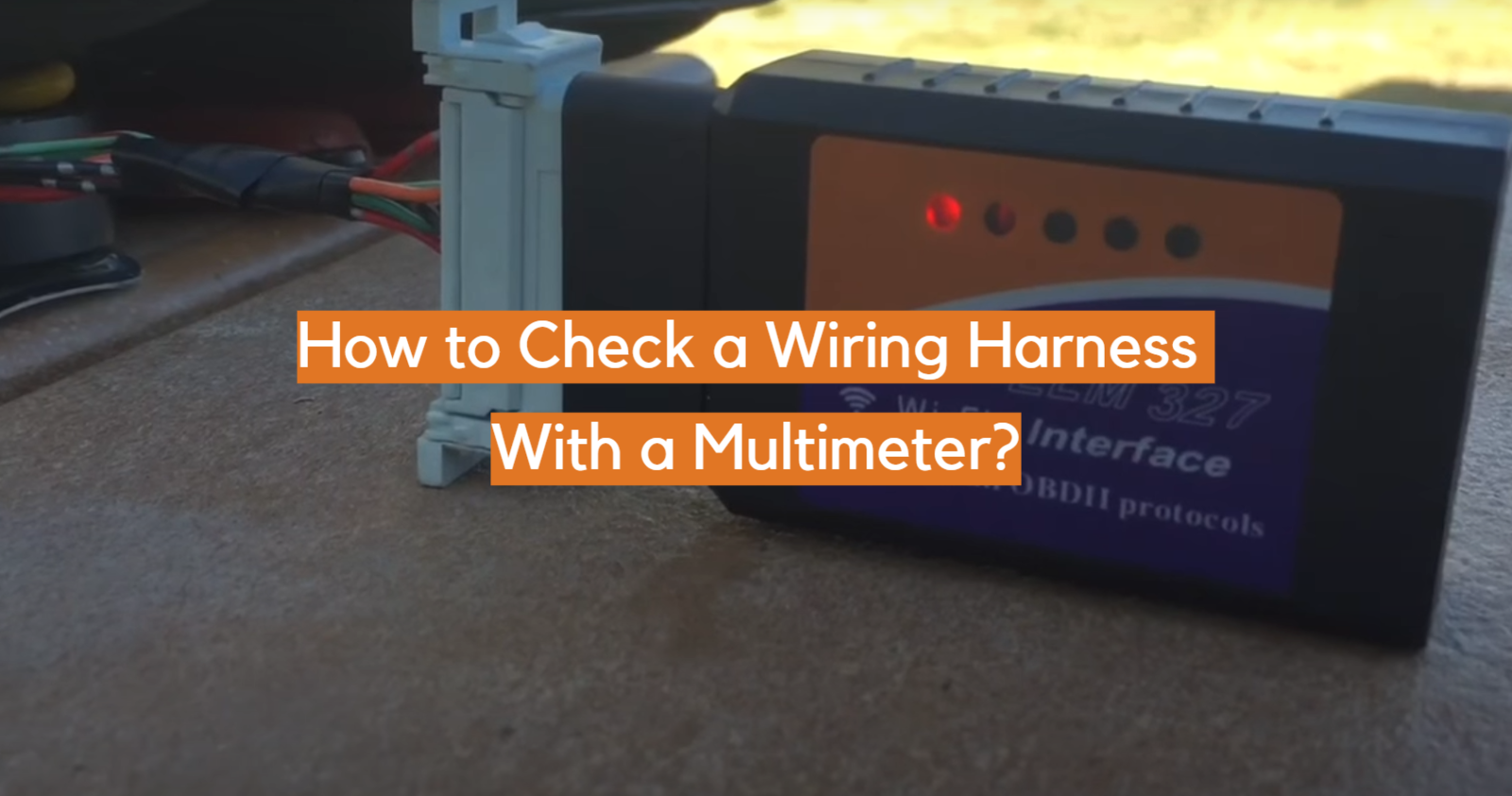








Leave a Reply